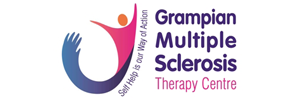
Confused about your Health and Safety responsibilities? We’re here to help. For small or new start-up businesses, you might be…

Outsourced Payroll Simplified Payroll Solutions and Services for UK companies with our low fixed fees, we help keep costs to…

We provide online Health & Safety and HR Compliance courses! These courses now start from £19.99 plus VAT for standard…

Are you managing your GDPR implementation internally but need some support? We offer a GDPR Compliance Pack. This is ideal…

Essential learning solutions for business owners and line managers Our courses are perfect for upskilling individuals, and they can also…
Businesses are constantly seeking ways to enhance productivity, streamline operations, and boost profits. However, amidst the pursuit of these goals, one critical aspect often gets overlooked: ensuring the health and safety of employees. Contrary to popular belief, investing in health and safety measures isn't just a regulatory requirement or a moral obligation—it's also a strategic business decision with significant return on investment (ROI).

Before looking at the benefits of prioritising health and safety, it's crucial to understand the potential consequences of neglecting it. Workplace accidents and illnesses not only result in human suffering but also incur substantial financial costs for businesses. From medical expenses and legal fees to lost productivity and damaged reputation, the ramifications can be staggering.
According to the International Organization of Standardisztion (ISO), the global economic burden of work-related injuries, illnesses, and deaths amounts to a staggering 3.94% of global GDP annually. These costs are not only borne by businesses but also by economies at large, affecting competitiveness and economic growth.

Investing in health and safety isn't just about avoiding fines or meeting compliance standards—it's about fostering a culture of care and accountability that directly contributes to business success. Here's how:

Measuring the ROI of safety investments can be challenging, as it involves quantifying both tangible and intangible benefits. However, various metrics can provide valuable insights into the effectiveness of safety initiatives, including:

Within organisations, the Human Resources (HR) department plays a pivotal role in championing health and safety initiatives. HR professionals serve as advocates for employees, ensuring that their voices are heard and their concerns are addressed. From developing comprehensive safety policies and procedures to providing training, online training, and resources, HR teams are instrumental in creating a culture of safety and well-being.
Moreover, HR professionals serve as liaisons between management and employees, facilitating open communication channels and promoting a collaborative approach to risk management. By partnering with other departments, such as operations and compliance, HR can align health and safety objectives with broader organisational goals, driving sustainable results and maximising the ROI of safety investments. In essence, HR's involvement is integral to creating a safe, supportive, and thriving workplace environment for all.

Prioritising health and safety isn't just a moral imperative—it's a strategic imperative with tangible benefits for businesses. By investing in the well-being of their workforce, organisations can enhance productivity, reduce costs, and safeguard their reputation, ultimately driving sustainable growth and success.
"As business leaders, it's time to recognise that the ROI of safety isn't just a theoretical concept—it's a reality that can transform our workplaces for the better. Let's commit to building safer, healthier, and more prosperous organisations for the benefit of everyone involved." - Edward Obi, Director of HR Hub Plus.
First Floor, Office 20,
Balmoral Hub, Building 1,
Balmoral Business Park,
Loriston, AB12 3JG

Copyright © 2022 hrhubplus.com. Registered Office: First Floor, Office 20, Balmoral Hub, Building 1 , Balmoral Business Park, Loriston, Aberdeen, Scotland, AB12 3JG. Registered in Scotland SC584928.
| Cookie | Duration | Description |
|---|---|---|
| cookielawinfo-checkbox-analytics | 11 months | This cookie is set by GDPR Cookie Consent plugin. The cookie is used to store the user consent for the cookies in the category "Analytics". |
| cookielawinfo-checkbox-functional | 11 months | The cookie is set by GDPR cookie consent to record the user consent for the cookies in the category "Functional". |
| cookielawinfo-checkbox-necessary | 11 months | This cookie is set by GDPR Cookie Consent plugin. The cookies is used to store the user consent for the cookies in the category "Necessary". |
| cookielawinfo-checkbox-others | 11 months | This cookie is set by GDPR Cookie Consent plugin. The cookie is used to store the user consent for the cookies in the category "Other. |
| cookielawinfo-checkbox-performance | 11 months | This cookie is set by GDPR Cookie Consent plugin. The cookie is used to store the user consent for the cookies in the category "Performance". |
| viewed_cookie_policy | 11 months | The cookie is set by the GDPR Cookie Consent plugin and is used to store whether or not user has consented to the use of cookies. It does not store any personal data. |












